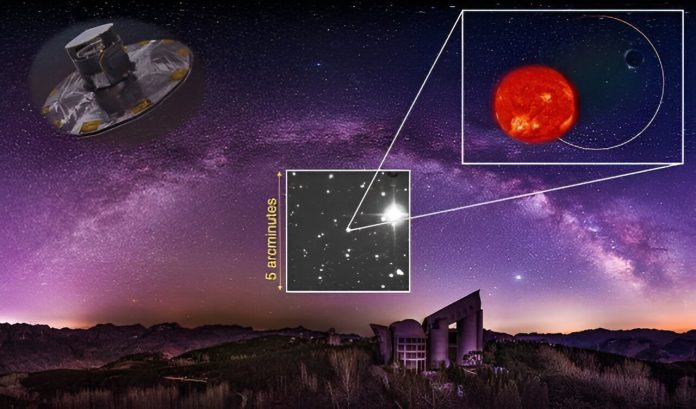
Chinese astronomers have discovered a rare, small black hole in a unique binary star system, providing new insights into the formation of black holes.
The research, led by Dr. Wang Song from the National Astronomical Observatories of the Chinese Academy of Sciences (NAOC), was published in Nature Astronomy.
Over the last 60 years, scientists have found about 24 stellar-mass black holes, mostly using X-ray detection methods. These black holes typically range from 5 to 25 times the mass of our Sun.
However, there has been a noticeable “mass gap” between 3 and 5 solar masses, with few black holes discovered in this range.
Scientists believe this gap could be due to special supernova processes that prevent the formation of black holes in this mass range, or it might simply be harder to find these black holes.
Recent gravitational wave studies have shown evidence of compact objects in this mass gap, but it’s still unclear if low-mass black holes exist in binary star systems.
These systems often don’t interact or emit X-rays, making them hard to detect with traditional methods.
To search for such hidden black holes, astronomers used two methods: radial velocity (measuring how stars move) and astrometry (tracking star positions).
Using data from the Large Sky Area Multi-Object Fiber Spectroscopic Telescope (LAMOST) and the Gaia space observatory, the research team examined binary star systems and found a promising candidate in a system called G3425.
This system includes a red giant star with a mass of about 2.7 times that of the Sun, and a dark companion with a mass around 3.6 solar masses.
No light was detected from the dark object, confirming that it is a black hole. Importantly, its mass falls within the 3 to 5 solar mass “gap.”
The binary system G3425 has an unusually wide orbit, taking about 880 days for the two objects to orbit each other, and its orbit is nearly circular.
This is highly unusual, as standard models of how binary systems form and evolve don’t explain such a wide, circular orbit after a supernova explosion.
This discovery shows that by using radial velocity and astrometry, scientists can detect “quiet” black holes in binary systems that don’t produce X-rays.
The findings suggest that low-mass black holes in binary systems do exist and may help scientists better understand how black holes and binary systems form and evolve over time.
Source: Chinese Academy of Sciences.



